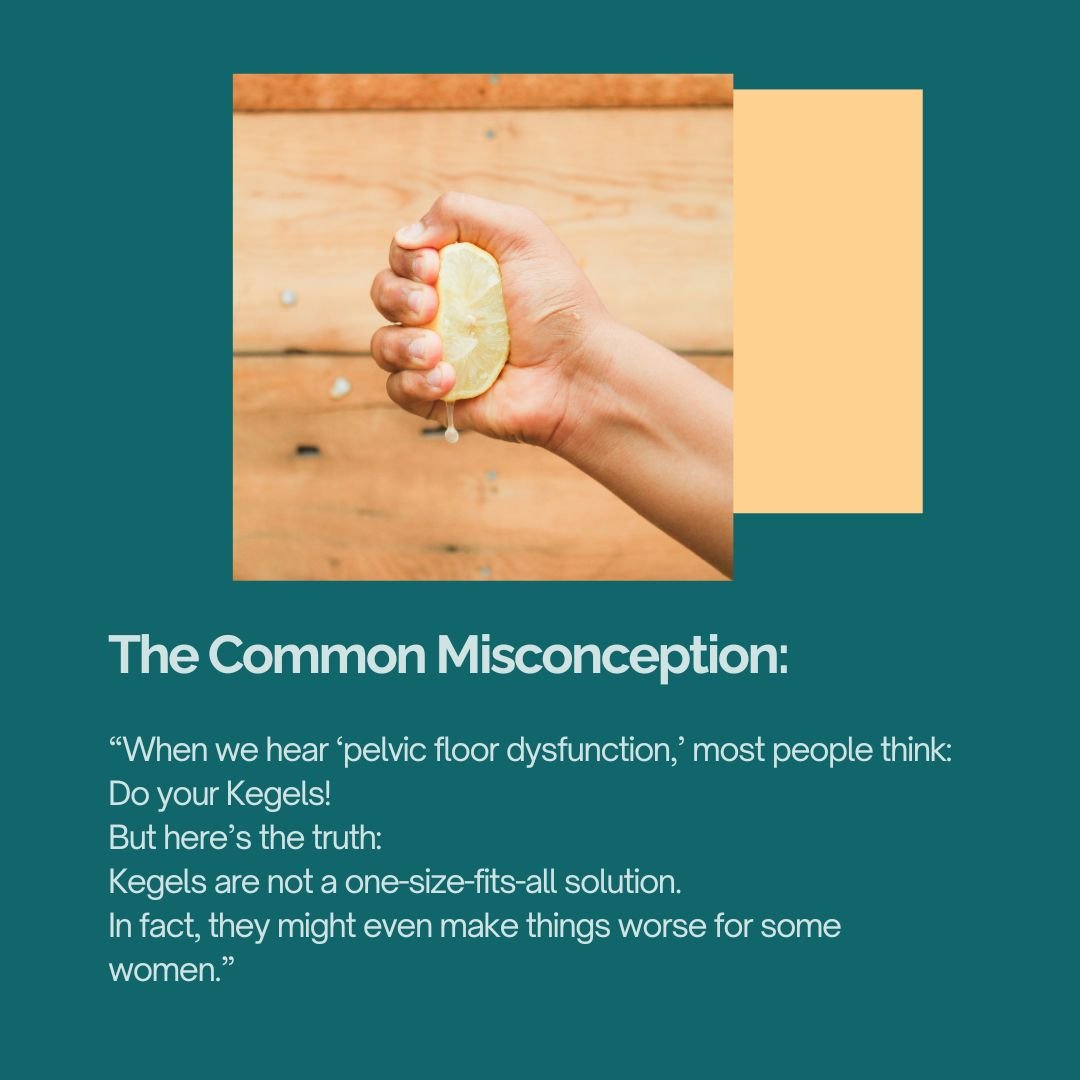
Insights
Pathways to Pain Relief: Insights and Resources for Your Journey
Tight vs Functional: Why Gripping Isn’t the Answer for Your Pelvic Floor
Many of us have been told to “squeeze,” “tighten,” or “brace” to protect our core and pelvic floor. But here’s the truth: a muscle that’s always tight isn’t a strong muscle — it’s an exhausted one.
In pelvic health, this distinction is crucial. Function doesn’t come from gripping harder; it comes from teaching the body to release, respond, and move with adaptability.
Just like your nervous system, the pelvic floor needs to find its Goldilocks point — not too tight, not too lax, but adaptable and responsive to what life asks of it.
Why Certain Breathing Positions Can Make a Bladder Prolapse Feel Worse
Why do some breathing positions make a bladder prolapse feel heavier? This blog explores how side-lying with a soft ball, 3-6-9 breathing, and apnoea can shift pressure pathways, affect fascia, and influence pelvic nerves. Learn how bracing impacts fascia health, why mobilisation keeps your support system “juicy” and functional, and how nerve pathways (pudendal, hypogastric, pelvic splanchnic, and obturator) play a role in prolapse symptoms. Discover practical troubleshooting tips and how Hypopressives can help you build safe, lasting pelvic floor support.
The Jaw–Pelvic Floor Connection: How Releasing One Area Can Transform the Other
We don’t usually think about our jaw when we have pelvic floor symptoms, or vice versa, but they’re more closely linked than you might imagine. Through fascia, muscles, nerves, reflexes, and even shared developmental origins, tension in one area can ripple through the other.
Research and clinical experience have shown just how powerful this connection can be, and why releasing tension in the jaw can improve pelvic floor tone and function, and the other way around.
Understanding Pelvic Organ Prolapse: Beyond Tightness and Towards Recovery
Most people think prolapse means your organs are just… falling out.
But what if it’s not about falling—
What if it’s about being pulled?
In my newest blog, I dive into the real mechanics of pelvic organ prolapse, why tight isn’t the answer, and how movement (yes, even gentle movement!) can help you heal.
The Healing Power of Mindset: What Science and Experience Reveal
It may seem backwards—but often, the first step in healing is to help the body feel like healing is possible. Before tissue regenerates, hormones rebalance, or prolapse improves, we need to shift the internal state that’s governing those systems. And that begins with perception.
Your nervous system isn’t just reacting to the world around you—it’s constantly scanning for cues of safety or threat. When it perceives threat (even subtly: a sense of being broken, overwhelmed by symptoms, or stuck in fear), it stays in survival mode. Blood flow is redirected away from healing, breath becomes shallow, fascia tightens, and energy is spent on defence, not repair.
But when we create moments where the body feels safe—even briefly—something changes. The vagus nerve responds. Breath deepens. Fascia softens. The system downshifts from protection to possibility. It’s in this state that healing can truly begin.
The Healing Power of Shaking: From Ancient Rituals to Nervous System Reset
Why do we instinctively shake after a shock? Why does rocking soothe a crying baby or calm a distressed adult? Shaking, trembling, and vibrating aren’t symptoms to suppress—they're innate mechanisms of healing. This post explores the roots and relevance of shaking therapy, from ancient rituals to contemporary trauma practices like TRE. We’ll dive into how shaking affects the brain, fascia, and vagus nerve, and even how our organs respond to vibration and sound.
Reflux, Silent Reflux & Hiatal Hernia: When Less Is More in Hypopressives
Hypopressives are designed to reduce pressure in the abdominal cavity — but what if your session left you with a wave of reflux, throat tightness, or even heartburn?
It can feel disheartening when a technique meant to help seems to aggravate your symptoms. But this isn’t a sign to quit — it’s a sign to listen. In many cases, these sensations aren’t failure; they’re feedback. And when we soften, modify, and approach things with less performance and more presence, the benefits often return tenfold.
Ready to Rebound: A 12-Week Prep Plan for Safe, Strong, and Joyful Jumping
Rebounding can be an incredible way to boost your cardiovascular health, build strength, and support your pelvic floor when your system is ready for it.
But jumping—whether on a trampoline or not—isn’t just child’s play. It’s a full-body event that demands elastic recoil, fascial glide, pressure management, and joint integrity. That’s why preparation is everything.
Everyday Movements That Heal (or Hurt): How to Move Smarter for Your Pelvic Floor
When we think about healing pelvic floor dysfunction, we often think about exercises, physio appointments, or breathing drills. But the truth is: it’s not just about what you do in class or clinic. It’s what you do all day long that really shapes how your pelvic floor responds, recovers, and supports you.
The way we lift, sit, stand, carry, sleep, and clean can either reinforce dysfunction—or quietly build strength, resilience, and ease.
This post will walk you through 8 everyday movements—with the why, the how, and what to avoid—so you can turn your daily life into a healing practice.
Eyes Wide Open: How Your Gaze Impacts Your Brain, Nervous System—and Pelvic Floor
When you rest in stillness with your eyes gently closed—or softly behind the eyelids with a downward gaze—you allow the visual system to take a break. This reduces sympathetic activation and frees up energy for internal regulation: like better bladder control, digestive rhythm, and pelvic floor coordination.
Healing, Breath, and the Body: Can Hypopressives Support Cancer Recovery?
Cancer is a journey that can feel overwhelmingly out of our control. Between treatments, side effects, and the mental toll of uncertainty, it’s easy to feel like your body has been hijacked by something you can’t influence. But what if there was a way to reclaim some of that power? What if you could take an active role in your own healing and find moments of calm, relief, and even strength along the way?
Rebounding and Your Pelvic Floor: Helpful or Harmful?
Your pelvic floor needs load. Fascia and soft tissue thrive on load—it stimulates collagen and elastin production, keeping your tissues strong, responsive, and well-hydrated.
Rebounding (aka bouncing on a trampoline) delivers dynamic, elastic load through the whole body—hips, spine, core, feet—and, when done well, can actually support pelvic floor resilience.
In fact, studies show that trampolining offers greater biomechanical stimulus than running, especially when it comes to gravitational loading. So yes—it’s effective.
But effective isn’t the same as appropriate—especially if your system isn’t ready.
The Brain–Pelvic Floor Connection: Why Thoughts Matter More Than You Think
The pelvic floor doesn’t operate in isolation. It’s part of a deeply interconnected system, regulated by the brain through both the somatic and autonomic nervous systems. Motor signals from the brain travel down the spinal cord and out through nerves like the pudendal, directing muscle tone, contraction, and relaxation in the pelvic floor.
But there’s more—emotions, trauma, and even thoughts can change the brain’s outputs.
“What’s Going On Down There?”: Understanding the Perineum and Perineal Descent
You’re Not Alone (and You’re Not Doomed)
Let’s break the taboo. Your perineum deserves just as much attention as your abs, your glutes, or your heart. If you’ve been feeling like something’s “off” or like your body isn’t responding how it used to, you’re not imagining it—and you’re not alone.
The great news? Your perineum is responsive. With the right tools—like Hypopressives, gentle release work, and postural awareness—it can heal, lift, and reclaim its place in your pelvic puzzle.
🦶 From Sole to Core: How Your Feet Influence Pelvic Floor Health
When people think about pelvic floor dysfunction, they often focus on what’s happening “down there.” But zoom out for a moment—and look down. Way down. The feet, our often-overlooked foundation, hold a powerful key to unlocking pelvic balance, nervous system regulation, and better breath mechanics.
Hiatal Hernia: Why It’s More Common Than You Think — and How Hypopressives Can Help
Experiencing reflux, breathlessness, or chest pressure? Hiatal hernias are becoming more common — and posture, breath, and fascia may be to blame. Discover how Hypopressives can relieve symptoms by decompressing the diaphragm, restoring fascial support, and reducing internal pressure. A holistic approach to healing from the inside out.
✨ The Hidden Cost of Shapewear: What It’s Doing to Your Pelvic Floor
We’ve been told that shapewear is a quick fix — smoothing the belly, lifting the bottom, holding everything “in place.” But at what cost?
As a pelvic floor specialist, I see behind the scenes — what’s happening inside the body when it’s tightly wrapped, compressed, and silenced by elasticized control. Spoiler alert: it’s not doing your pelvic health any favours.
Here’s what you need to know.
When the Ribs Won’t Let Go: Emotional Roots of Rib Cage Tension (And How to Release Them)
If your ribs feel stuck, it’s not a sign of failure—it’s a signal.
Your body isn’t broken.
It might just be asking for safety before mobility.
Support before stretch.
Listening before forcing.
Why Kegels May Not Be the Best Choice for Most Women with Pelvic Floor Dysfunction
Your pelvic floor isn’t meant to work in isolation—it’s part of a complex, coordinated team. It works alongside your diaphragm, deep core, hips, feet, and nervous system.
What your body really needs is a responsive pelvic floor:
One that contracts when needed, relaxes when it’s safe, and moves rhythmically with your breath and posture.
Kegels isolate the pelvic floor from this team. They often fail to restore true function—and can even create further imbalance.
Why Voice Projection Can Overload Your Pelvic Floor
Do’s and Don’ts for Voice & Pelvic Floor Health
✅ DO:
Practice exhaling while speaking rather than holding your breath and pushing.
Use diaphragmatic breath before and after long speaking or singing sessions to reset pressure.
Check your posture: Tall spine, soft knees, relaxed jaw. Alignment helps the canister function.
Incorporate voice and breath coordination drills (see below).
Use voice resonance (vibration in the chest or face) instead of pure force.
❌ DON’T:
Yell or speak forcefully while breath-holding.
Tuck your pelvis or lock your knees while speaking.
Push your belly out on inhale or clench your abs on exhale.
Ignore signs like pelvic heaviness or leaking—those are cues your system needs support.


















